
http://www.nal.res.in/picts/ntaf221208.jpg
That looks so cool...so what are the challenges to making it manned after the demo flight? I guess they will have to design it on the lines of fighter plane cockpits and the experience with the Soyuz redesign for the manned mission should help(apologies for my ignorance on these areasWind tunnel model Of RLV- TD
..also pave way for an Indian colony on moon, a few decades down.
What you see here is the reuseable strap on booster (solid or liquid fueled, the latter is more useful because it only need simple checkout and a gas nozzle to fuel it up for next mission) as a first step that will land back intact after it is expended and jettisoned by the rocket.Abhijit N wrote:That looks so cool...so what are the challenges to making it manned after the demo flight? I guess they will have to design it on the lines of fighter plane cockpits and the experience with the Soyuz redesign for the manned mission should help(apologies for my ignorance on these areasWind tunnel model Of RLV- TD)


Check this link out.p_saggu wrote:Any pictures / concept drawings around?AERODYNAMIC CHARACTERISATION OF RLV-TD
I believe this is a predominantly a launch platform for putting satellites into space. If India is modifying Soyuz, then our manned space program would use a capsule very similar to Soyuz. Gurus please correct me if I am wrong.Abhijit N wrote:That looks so cool...so what are the challenges to making it manned after the demo flight?
Thanks for the link. Do you have the complete paper?Daedalus wrote:Check this link out.p_saggu wrote: Any pictures / concept drawings around?
Arun_S wrote:What you see here is the reuseable strap on booster (solid or liquid fueled, the latter is more useful because it only need simple checkout and a gas nozzle to fuel it up for next mission) as a first step that will land back intact after it is expended and jettisoned by the rocket.Abhijit N wrote: That looks so cool...so what are the challenges to making it manned after the demo flight? I guess they will have to design it on the lines of fighter plane cockpits and the experience with the Soyuz redesign for the manned mission should help(apologies for my ignorance on these areas)
The RLV concept will then be extended to core and upper stages. The problem for upper stages is the impact on mass fraction due to winglets and larger mass fraction required for re-entry stress abatement.
Imagine what will happen if GSLV-I's four strap-on Vikas motors and the second stage Vikas can fly back and be re-used 10 times?

Daedelus thanks for the linkDaedalus wrote:Check this link out.p_saggu wrote: Any pictures / concept drawings around?


Are we talking tiles here like the ceramic ones in the X37 that disha mentioned...that will add quite a bit of weight combined with lots of maintenance to prevent Columbia like disaster...or are there better options like maybe silica with low density & insulation as used in shuttle.....wikipedia image of Silica at 1260C:...larger mass fraction required for re-entry stress abatement.

Re-entry is going to be a challenge.The dream of making a vehicle which can take off from a runway like an aircraft, and to return to the runway after deploying the spacecraft in the desired orbit (or Single Stage To Orbit or SSTO) can be fulfilled only by the availability of more advanced high strength but low density materials so that the structural mass of the vehicle could be reduced considerably from the present levels. The advent of nanotechnology could play a deciding factor in developing such exotic materials. However, the materials
Proceedings of the International Conference on Aerospace Science and Technology
26 - 28 June 2008, Bangalore, India technology available today can realize a Two Stage To Orbit (TSTO) vehicle only and the configuration of the vehicle which is being considered is shown in Fig.1. However, the before realizing the RLV-TSTO it is important to perfect many critical technologies pertaining to hypersonic reentry vehicles. Hence a technology demonstrator vehicle (RLV-TD) is being developed. Fig.2 shows RLV-TD.
...and I hope we have more accurate models in place too for this. Just satellite data doesn't help...supercomputers I guess isn't a problem for solving the modelsThis satellite will provide lot of inputs for weather modulates and near time weather forecast and so on," said Nair.

Unfortunately I don't. Wish ISRO had some thing on their website about new techs/developments they are working on, like in automobile websites showing future/concept models. I would really like that.disha wrote: Thanks for the link. Do you have the complete paper?
The above looks just like X-37. http://en.wikipedia.org/wiki/Boeing_X-37. And it is to be flight tested in 2009. If we can beat them, cool!
.p_saggu wrote:Daedelus, thanks!
No problem.K Mehta wrote:Daedelus thanks for the link
Its a PDF document, to be exact a paper presented at an IIT conference.nash wrote:Would you please post the content of link ....
Air breathing propulsion for launch vehicles envisages a combination of propulsion cycles: turbojet engine (widely used in aircraft), ramjet engine (currently being used in missiles), SCRAMJET engine (being developed around the globe) and rocket engine (the workhorse of today’s launch vehicles). They could either function as separate propulsion systems co-located or as a “combined” propulsion cycle engine by synergistically integrating them. A variant, rocket based combined cycle engine, which avoids the complex (rotating) turbojet component where the rocket engine in its air augmented mode is used for the low speed flight, is also gaining popularity.
In RAMJET, combustion chamber speeds are higher than that in turbojet but are still subsonic. As the flight speed increases, decelerating air from supersonic flight speeds to subsonic speeds becomes more and more inefficient, both in terms of pressure recovery and combustion processes. For flight Mach numbers of about six and above, there is a need to restrain the level of air deceleration and to retain its lower supersonic speed as it enters the combustion chamber. This necessitates Supersonic Combustion RAMJET or SCRAMJET.
New Delhi (IANS): It is a set of pictures that is among the most anticipated in India - around 3,200 frames tracking the descent of the first-ever Indian-built device to the moon's surface.
But the Indian public may have to wait for some more time to take a peek at that journey.
The images were taken by the 35-kg Moon Impact Probe (MIP) as it hurtled down for nearly 25 minutes after detaching from India's maiden lunar probe Chandrayaan-I and landed on the lunar surface at 8.31 p.m. Nov 14.
That day, the Indian Space Research Organisation (ISRO) had released two photos of the pockmarked surface taken from MIP. Nothing after that.
According to a key Chandrayaan scientist, it is now a matter of waiting a bit more - though he still could not specify the date.
"While we have released some sample images already, the full set of 3,200 pictures will also be made public after some more time," A.S. Kiran Kumar, deputy director, sensor development area in ISRO's Ahmedabad-based Space Applications Centre, told IANS.
Kumar headed the team which built the Terrain Mapping Camera (TMC), one of India's key payloads on Chandrayaan.
The pictures are currently being analysed at ISRO's Physical Research Laboratory. "We could be releasing it in a couple of months," Kumar said, adding that the last photograph on the set was from a height of two to three kilometres from the surface.
One of the several activities involved in getting the pictures ready for public release is to identify the surface features. "Since the pictures are of very high resolution, the features are not listed on any current moon atlas," he said.
The TMC has meanwhile been mapping the South Pole at a resolution of five metres, through lens capable of capturing images at three angles simultaneously.
Recently, China unveiled a three-dimensional map of the lunar surface with data from its Chang'e-1 mission, while Japan has been frequently releasing imagery from its lunar orbiter, Kaguya, including that of the landing site of the Apollo 17 spacecraft.
But, Kumar insisted, photographs collected by the Indian orbiter would be better due to higher resolution and lower orbit height at 100 km.
"The Chinese camera is three-dimensional but only has a resolution of 200 metres compared to our five-metre resolution. The Japanese one has 10-metre resolution, but they have only stereo doublet - we have a stereo triplet," he said.
By stereo triplet, the senior ISRO scientist referred to TMC's capability to take images from three angles - frontal, nadir and rear views. "The advantage is that no portion (of the surface) will be blocked. Occlusion will not be a problem," he said.
In optics, 'occlusion' refers to the method in which a close object masks or covers an object that is further away.
While Chandrayaan goes around the moon approximately 12 times each day - the camera is operational for two to three orbits.
"We have to balance every activity on the satellite, take note of the operating condition and find the optimal time to transmit to the ground station," Kumar said.
The time slot also gets limited as the camera has to factor in the solar illumination angle, which changes with the orbit of the moon. The scientists have decided to limit the solar angle to 30 degrees on both sides of the equator to take consistently well-lit images.
During the 20-minute photographing in each orbit, TMC captures images over an area 1,700 km long and 20 km wide, which translates into 1.4 km per second.
"Every second of data recorded takes about two and a half seconds to be transmitted to the ground station," said Kumar. The latest photograph released is of a lunar impact crater on the far side of the moon.
The senior ISRO scientist said several images have also been provided to academic institutions for analyses.
NASA's Moon Mineralogy Mapper payload team has also sought information from TMC. "They are interested in particularly looking at the terrain data," Kumar added.
30 Dec 2008, 1344 hrs IST, ANI
BANGALORE: Indian Space Research Organisation (ISRO) chairman G. Madhavan Nair has said that after the success of Chandrayaan 1, India's Space Research Organisation (ISRO) is going to launch an exclusive weather satellite jointly with the French space agency CNES (Centre National d'Etudes Spatiales) in 2009.
The satellite, named 'Mehga Tropiques' will study the tropical atmosphere and its associated phenomena and would help India and France to study the cyclones, monsoon and other changes.
The Indian Remote Sensing Satellite (IRS) would be built and launched by ISRO and two instruments called SCARAB and SAPHIR would be built by the CNES.
The other critical instrument called MADRAS will be jointly engineered by ISRO and CNES.
Talking to reporters here on the sidelights of a programme on Monday, Nair said that the satellite would be launched by the end of 2009.
"It is a joint agreement between France and ISRO. Some instruments are made by French people and some we are doing it. By the end of the 2009, it would be launched. This satellite will provide lot of inputs for weather modulates and near time weather forecast and so on," said Nair.
The satellite would be operated by ISRO and both the countries (India and France) would share data.
India hopes to send an astronaut into space by 2012 and a manned mission to the moon by 2020.
India's Chandrayaan-1, the first unmanned spacecraft mission to moon and the country's first space vehicle to venture beyond Earth's orbit successfully entered lunar orbit on November 8.
Check this link out -> http://en.wikipedia.org/wiki/SABRE#cite_note-aau-1. Unrelated to RLV, but an indicator on how Oxygen may be liquefied.Abhijit N wrote: By the way I was wondering how the RLV manages to liquify oxygen onboard...
And any idea of the kind of propulsion system ...like is it a combined propulsion system as mentioned here in ISRO newletter archives:-
http://www.isro.org/newsletters/spacein ... hieves.htm
Sir, when was it originally scheduled to be launched , how many months it has been delayed.Arun_S wrote:This the long delayed satellite. The delay was due to French dragging their feet. The project was almost canned.
Semi-cryogenic Engine / Stage
Development Developing a higher thrust semicryogenic core stage for the unified modular launch vehicle.
(Project not yet approved)
Finalisation of the project report.
Initiation of the design and development efforts.
The proposal is in initial stages. The final outcome, in terms of availability of higher thrust semi-cryogenic stage is expected after six years.
The approval of the project is targetted during the FY 2008-09
Seems to be a bit of a waste dumping all that expensive hydrogen though....In an operational setting with LACE, the system was to be placed behind a supersonic air intake which would compress the air through ram compression, then a heat exchanger would rapidly cool it using some of the liquid hydrogen fuel stored on board. The resulting liquid air was then processed to separate out the liquid oxygen for burning in the engine. The amount of warmed hydrogen was too great to burn with the oxygen, so most was to be simply dumped overboard (nevertheless giving useful thrust.)

It is because of the compromises to be made in order for the O2 collection and this is one of the compromises in that case.Abhijit N wrote: Seems to be a bit of a waste dumping all that expensive hydrogen though....
ISRO arm plays favourites
Express News Service
First Published : 02 Jan 2009 08:18:00 AM IST
Last Updated :
BANGALORE: A performance audit of the Antrix Corporation Limited (ACL), the commercial arm of Indian Space Research Organisation (ISRO), has revealed many irregularities in the functioning of the company, including undue benefits to private companies.
The Express has a copy of the report of the Comptroller & Auditor General of India on the performance of Antrix Corporation Limited, which was tabled in the Lok Sabha in October.
The report highlights the following points: n ACL extended undue benefit to Space TV (Tata Sky) by reducing the rates originally accepted by the customer while entering into a longterm agreement. Due to a reduction in lease charge, there was a recurring loss of revenue of Rs 4.8 crore per annum, whereas revenue of another Rs 5 crore was foregone due to increase in free period by a month.
n The company allowed Reliance Communications Limited to bill for the bandwidth utilised by them instead of the bandwidth allocated to them.
Absence of a deemed supply clause in 16 contracts led to a loss of Rs 27.45 crore in revenue.
n The service charge on foreign transponders was voluntarily reduced by the company, resulting in a recurring loss of Rs 8.3 crore in seven cases. There were delays in recovery of quarterly recurring charges and service.
n Service Tax was not being collected from foreign hired transponders resulting in a likely liability of Rs 16.77 crore to the exchequer. However, service tax was collected from INSAT operations.
n Though the company was set up as the commercial arm of the Department of Space (DOS), several commercial contracts like with Prasar Bharati, New Sky Satellite, Netherlands and INTELSAT were not entrusted to the company.
n ACL’s non-operational revenue (interest earned from deposits in banks) averaged around 50 per cent of the profit after tax during 2002-03 to 2006-07, which suggests that the company was used as a special purpose vehicle for unutilised funds by the DOS.
n Despite having substantial cash balances, ACL had not developed proper procedures to increase its yield from the surplus cash retained by it.
n There were delays in revenue recognition or raising bills and important contractual provisions in respect of performance bank guarantee, surrender or termination of leased capacity were not followed.
n Company-specific guidelines and procedures for investments, personnel and accounts had not been developed even 15 years after the company’s creation in 1992 and despite Government’s clear directive.
n The functional distinction between the company and the DOS was ambiguous since the department’s officers were also executives of the company. Proper delegation of powers consistent with good governance, structure and growth of the company had not been drawn.
n ACL credited the DOS share of revenue to ISRO instead of the Consolidated Fund of India. Remittances were also prompt even though the relevant money was shown as accrued to the DOS in the Accounts. Periodical reconciliation of amounts due and payable to the DOS had not been carried out.
I was reading about compression lift here:....The drag and weight factor for this can be reduced by using compression lift

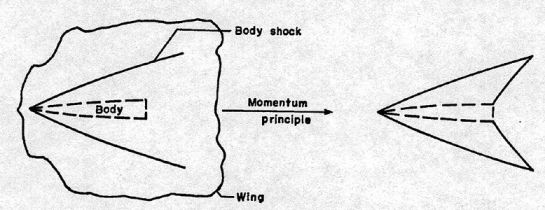

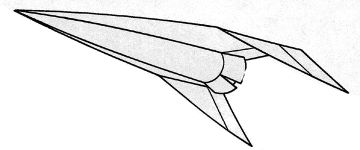


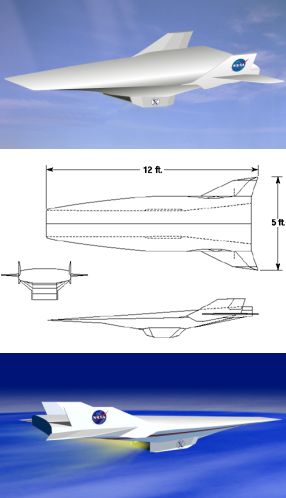

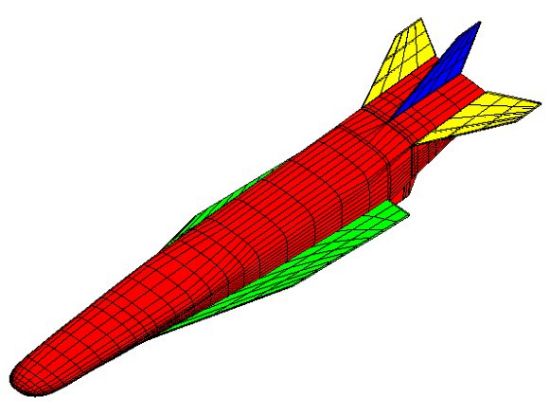
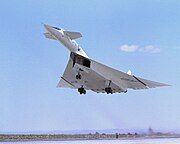
Lets see if I get the hang of these...Under the center of the wing, the Valkyrie featured a prominent wedge at the center of the engine inlets, designed to produce a strong shock wave. By acting upwards upon the wings, this shock wave would allow the aircraft to recover energy from its own wake. At high speeds, compression lift increased the lift of the wings by thirty percent, with no increase in drag
Seems to be a very interesting concept....I have heard of air being bled from the shock wave in Su-7 by moving the inlet cone in, during flight to "bleed" air from lip of the shock wave...... release of H2 along the Hypersonic shock wave, which compresses the air/H2 mixture and pushes it into the ram intake .....
Something to think about. But for initial testing the RLV is going to be using Rocket assisted take off. Again lift can be generated due to the angle of the craft with respect to air flow too. I do not know at what altitude the scramjet engines would kickoff or the amount of aerodynamic lift at those altitudes - may be some guru can comment on this. For the return journey, drag is more important than the lift. Currently the space shuttle also is inclined at a certain angle and exposing only the protected underside during descent.Abhijit N wrote:The author mentions that the above principle has been used to make a successful Mach 3 aircraft. However our RLV seems to have exactly the opposite features
From my "internal" sources at ISRO (who themselves have very limited information) RLV-TD would more likely be having a vertical launch profile on an S9 solid booster engine. By the time the trajectory becomes horizontal it would have cleared the lower atmosphere. The S9 booster would be later redesigned to be recoverable.Abhijit N wrote:
The author mentions that the above principle has been used to make a successful Mach 3 aircraft. However our RLV seems to have exactly the opposite features
I guess there are sound principles at work here...but the initial design seems to be incapable of compression lift.
This is the other direction future space tech is going to be in. A large vehicle with multiple engine assembly. Again.. I hope ISRO pursues this, its not too difficult to do. Even amateurs like us would be able to get considerable progress in this areass_roy wrote:I think India should build a better falcon-9 type expendable launcher. It would be cheap to build and could put a decent amount in LEO and GTO orbits.
Agreed that it is going to be much more complicated than what ISRO has achieved till date. But as Mr.Nair put it, it is more about retaining talent by keeping them challenged intellectually. More problems to solve, more cutting edge research would attract and keep the best talented people in ISRO.ss_roy wrote:A reusable spacecraft has to be much more durable and stronger than an equivalent disposable launcher+ payload as most of the spacecraft returns to earth for refurbishment. But chemical fuels have a limited Isp, and the best cryogenic engines top out at around 460 secs thrust. Therefore there is a limit to reducing fuel weight as a % of total weight. All spacecraft (reusable/ expendable) designs are a compromise of these two requirements (strength and fuel capacity). Moreover the weight savings possible by collecting oxygen from the air , in an RLV, are substantially negated by the extra weight and complexity necessary to achieve that
Well then India should stop its space program. With GSLV-Mk3 we should be able to launch our heaviest satellites - after 2009, we would not need any more improvements to our space vehicles atleast (our satellites are already world class). Regarding cost, we Indians are quite efficient with the allotted funds and used to working on shoestring budgets. Regarding practicality, it depends on what all other countries think is practical - there was no reason in 1960s to go to the moon or send a man there, there has been no activity for almost 4 decades, now suddenly it started picking up in Asia (all this helium stories are humbug - would never be economical to mine stuff from moon, and we still havent perfected N-fusion yet). The latest fad is hypersonic flight and affordable space transport. But dont forget that due to their spending in the 60s, Russia and America are the top scientific superpowers when it comes to space today. Also you can only spend money in all this when your economy is doing good - but the knowledge/experience would stay for a long time to come.ss_roy wrote: So why are we doing this? just to show whites that we can do it? who cares?... Screw them..
Let us do things because they make sense, are profitable, practical, efficient and useful to US as a people.